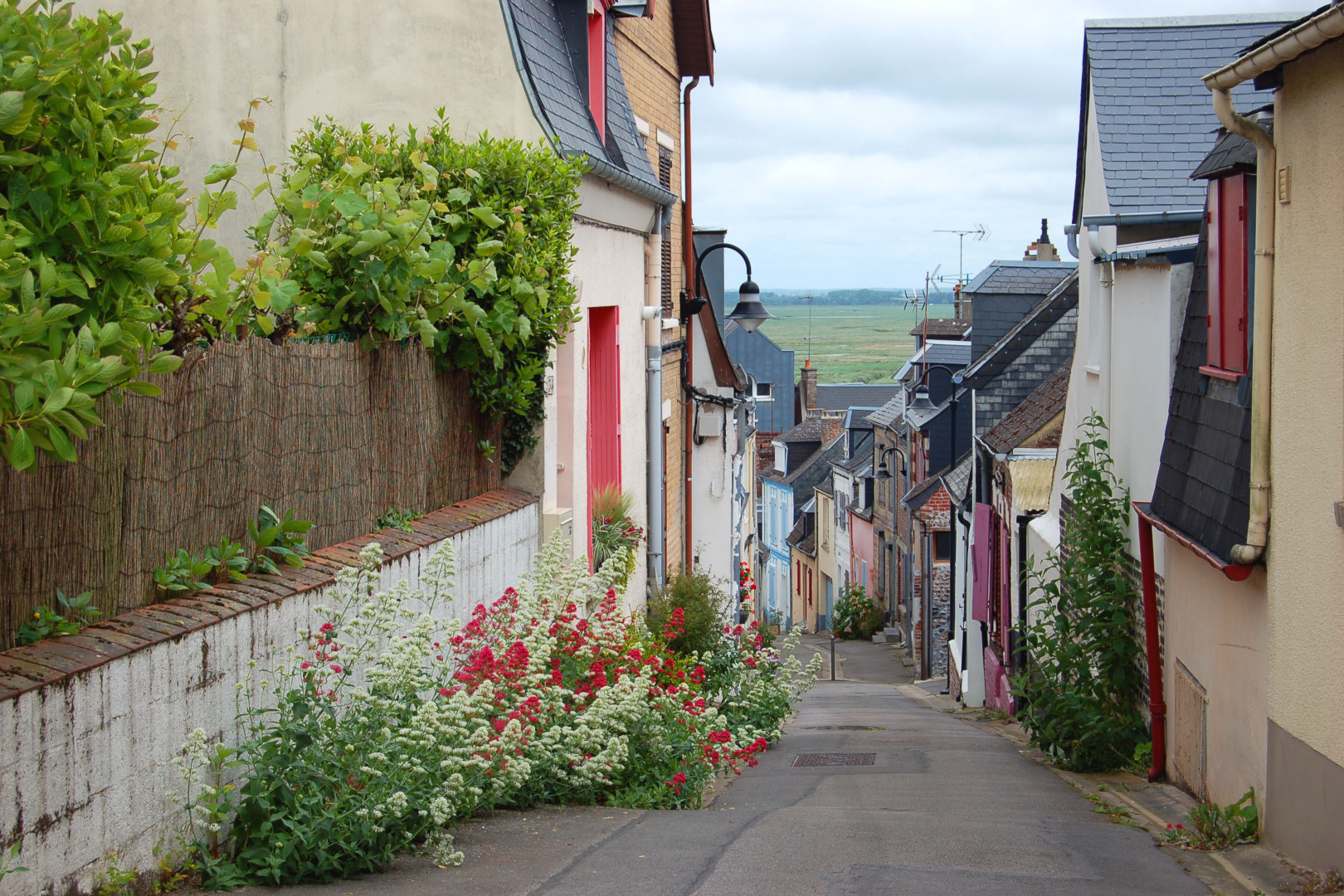Somme Tourisme: Slow tourism in the Somme
Text: Lisa Gerard-Sharp | Photos © Somme Tourisme

Set on the Picardy Coast, within easy reach of Dieppe, the Somme estuary, the largest in Northern France, is a mosaic of marshes, pale sands and water meadows. The Somme flows seamlessly from Amiens, a painterly provincial backwater, to the beguiling bay and sandy beaches. It feels like the end of the world: one long nature ramble through haunting landscape.
The Baie de Somme evokes an earlier age, with chuffing steam trains, cutesy bathing huts and time-warp fishing villages. The untamed coastline is a patchwork of swirling marshes, chalky cliffs, washed-out skies and endless dunes. Born in the Somme and based in Amiens, Aurélie Wallet, the face of Somme tourism, has her roots in this watery region: “My parents lived near the battlefields but we also had a cottage on the coast so I feel at home on a boat or a bike, surrounded by this softly shifting landscape.”

Learn how this fragile landscape depends on supporting elements, from the fishermen to the grazing sheep.
Full steam ahead
A steam train links coastal Saint-Valery-sur-Somme, Le Crotoy and Cayeux-sur-Mer and promises an old-fashioned fenland ride, past banks overhung by weeping willows. The train has been chuffing away since the days of the Belle Epoque when the coast began to attract bathers. The railway may have reached the coast in 1870 but the Baie de Somme still feels like a delightfully under-populated pocket of lost France.
Wallet sees the bay as a place to recharge your batteries: “Maybe paddling a pirogue canoe in search of seals, or walking across the mud flats when the tide is out.” If not sailing across the bay, shrimp-fishing or cycling the towpaths, watch the wild horses and flocks of marsh sheep. You can ride a Henson, the sturdy, sand-coloured horses at home in the polders and dunes of the Marquenterre. As the largest dunes in Northern France, the reserve attracts migratory and marsh birds. Set between the estuary of two rivers, this is the place to spot waders such as egrets, herons, storks and spoonbills.

The coastline, which weaves amongst dunes and marshes, is deeply unspoilt and unbuilt up.
Coastal backwaters
Saint-Valery is a medieval outpost, with its crumbling ramparts and towers in the upper town. The flower-bedecked alleys of the fisherman’s district draw you in, as do the painted cottages. It was here that William the Conqueror mustered his troops for the 1066 Norman Conquest. Today, you are more likely to be mustered into a boat trip to see seals cavorting in the estuary or beached on the sandbanks.
Once English, Le Crotoy is a pretty fishing harbour, home to shrimping boats. The sandy beaches are made for pottering and collecting marsh samphire along the shore. Cayeux, with its endless boardwalk and parade of beach huts, looks much as it did in its Belle Epoque heyday. There is also paddle-boarding and kitesurfing.
The River Somme is the backbone of the region, connecting these fishing ports and fortified hilltop villages with both Amiens and the Great War battlefields. It is hard to believe that the Somme also means mine craters, memorials, cemeteries and razed villages, but this part of the area’s history is a different story. “The Somme has suffered a lot,” says Aurélie Wallet, “and been scarred by the Great War, but now that remembrance tourism has taken root, the locals have more ownership of their past. As a result, there’s a quiet sense of pride and belonging.”

Left: Amiens Cathedral. Right: Steam trains have never gone out of fashion in the old-school Baie de Somme.
Amiens, a floating city
“Our capital, Amiens, is such a liveable town – lively, provincial and countrified in the best sense, and built on a human scale,” enthuses Wallet. The city is dominated by its mighty cathedral, the largest Gothic church in France and the setting for the town’s summer sound-and-light summer spectacle, a tribute to its soaring Gothic spirit.
There is also plenty to see and do in the surrounding areas. Tucked into the bends of the River Somme, lie a mosaic of island gardens best discovered on a flat-bottomed boat. Known as the Hortillonnages, these picturesque marshlands typify the countrified city. As Wallet says, “From misty views across the marshes to our floating market gardens, ours is a watery world, with boat trips a way of life. My son and I also love cycling along the Chemin du Halage towpaths which run from town to countryside, hugging the riverbanks all the way.”
There is no shortage of characterful places to stay: from turreted mansions to treehouses, lockkeeper’s cottages or even gypsy caravans and, as in most parts of France, you are also never far from somewhere wonderful to eat in. The waterside bistros of the mellow Saint-Leu district, once the preserve of millers and weavers, pride themselves on some of the best food in the region. Freshly-fished shrimps and sole, lamb from marsh-grazed sheep, organic vegetables, honeyed almond biscuits and cider-coated cheeses are just some of the local specialities. “We’re more about fresh produce than showy gastronomy, with mussels and marsh samphire to the fore,” confirms Wallet. “And don’t forget to try our locally-brewed samphire beer.”
Web: www.somme-tourisme.com and www.visit-somme.com
Subscribe to Our Newsletter
Receive our monthly newsletter by email





